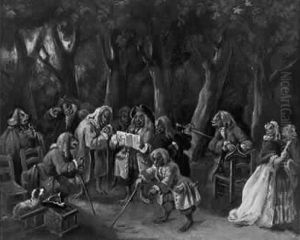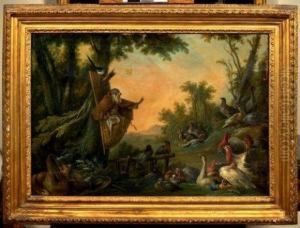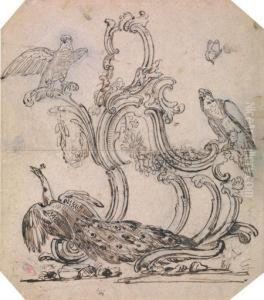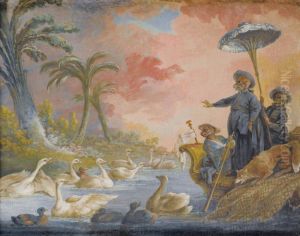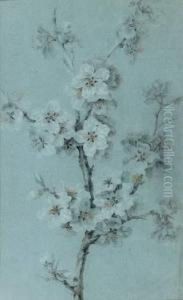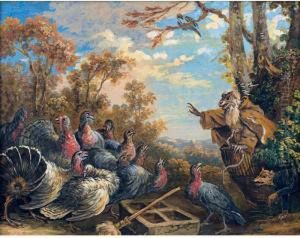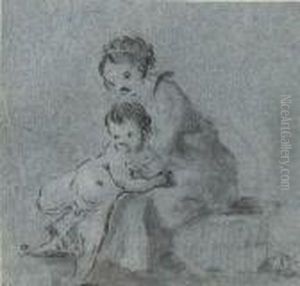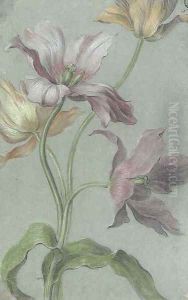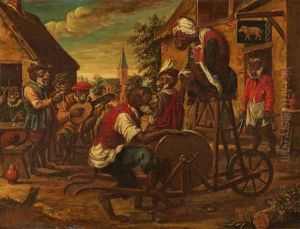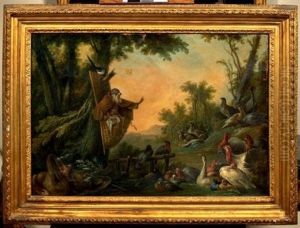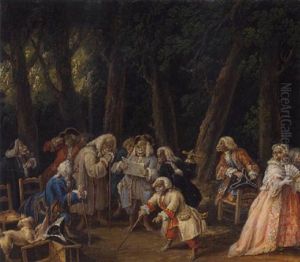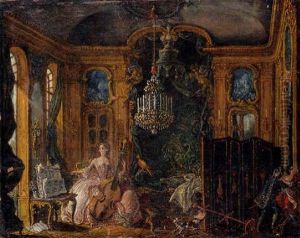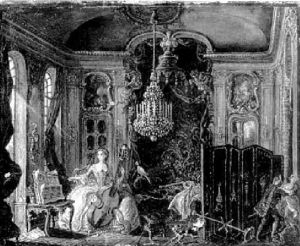Alexis Peyrotte Paintings
Alexis Peyrotte was a French artist and decorative painter who was born in 1699 in Avignon, France. His work was paramount during the Rococo period, which was known for its elaborate ornamentation, asymmetrical values, pastel color palette, and its light-hearted depiction of themes.
Peyrotte's career was mainly associated with the decoration of interiors, and he was particularly renowned for his skill in creating arabesques and grotesques, which are decorative paintings featuring scrollwork, foliage, and figures that were often whimsically intertwined. His style was characterized by a sense of elegance and fantasy, which perfectly captured the spirit of Rococo.
Over the course of his career, Peyrotte was commissioned to work on the interiors of private mansions and public buildings. His talents were recognized by the most influential patrons of his time, and he was often entrusted with decorating the residences of the French nobility.
One of his most notable works was the decoration of the Hôtel de Soubise in Paris, which is now home to the National Archives of France. The Hôtel de Soubise showcases some of the finest examples of Rococo interior design, and Peyrotte's contribution to its embellishment is a testament to his artistic prowess.
Despite the favor he enjoyed during his lifetime, Peyrotte's fame did not endure long past his death in 1769. As tastes changed and the Rococo style gave way to Neoclassicism, his works and contributions to the art world were overshadowed.
Nevertheless, in recent years, there has been a revival of interest in Rococo art, and with it, a renewed appreciation for artists like Alexis Peyrotte. Today, his works are recognized for their creativity and mastery of Rococo decorative arts, and they continue to be studied for their historical significance and aesthetic value. Alexis Peyrotte remains an important figure in the history of French decorative arts, representing the exuberance and delicacy of the Rococo movement.
